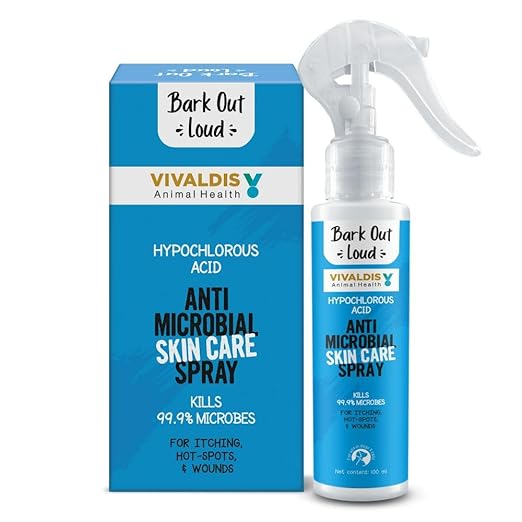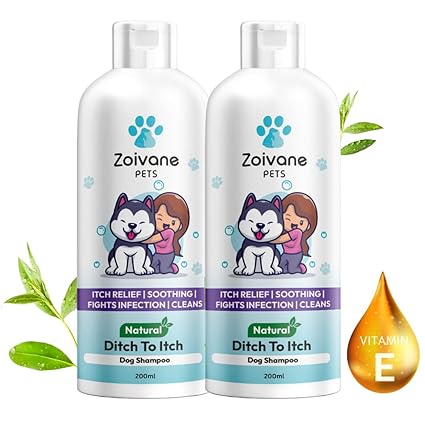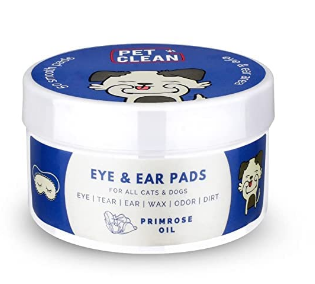Proper preparation can make a world of difference in ensuring your dog stays relaxed during grooming sessions. From choosing the right environment to selecting the best tools, every step plays a crucial role in reducing anxiety.
Choosing the Right Grooming Environment
The grooming environment has a direct impact on your dog’s stress levels. A noisy, unfamiliar, or chaotic setting can trigger anxiety, making grooming difficult. Here’s how to create a stress-free space:
- Gradual Exposure to Grooming Salons – If taking your dog to a professional groomer, introduce them to the salon gradually. Short, positive visits can help build confidence and reduce fear.
- Pick a Quiet Area – Choose a calm and familiar space in your home with minimal distractions. Avoid high-traffic areas or loud noises that might startle your dog.
- Ensure Proper Lighting and Ventilation – A well-lit, comfortable space helps your dog feel more at ease. Good ventilation prevents overheating, especially during longer grooming sessions.
- Use a Non-Slip Surface – Whether grooming at home or visiting a professional, ensure your dog stands on a secure, non-slip mat. This provides stability and prevents anxiety caused by slipping.
Selecting Appropriate Tools and Supplies
Using the right grooming tools is essential for making the experience comfortable and efficient. Poor-quality or inappropriate tools can cause discomfort and increase stress. Consider these key factors:
- Towels and Dryers – Some dogs fear the noise of a dryer. If your dog is sensitive, towel-dry them gently and introduce a low-noise dryer gradually.
- Choose the Right Brush for Your Dog’s Coat – Different breeds require different brushes. A slicker brush works well for long-haired dogs, while a bristle brush is better suited for short-haired breeds.
- Use a Quiet, Low-Vibration Clipper – Loud clippers can be intimidating. Opt for a quiet, cordless clipper designed for dog grooming to minimize noise and vibrations.
- Gentle, Hypoallergenic Shampoos – Harsh shampoos can irritate your dog’s skin. Choose a mild, hypoallergenic formula that suits your dog’s coat type.
- Nail Clippers or Grinders – Overgrown nails can cause discomfort and anxiety. Use a high-quality nail clipper or grinder to trim nails safely without causing pain.
Anxiety Relief Techniques for Dogs
Many dogs develop anxiety around grooming due to unfamiliar sounds, sensations, or past negative experiences. Using the techniques below can help ease their fear and make dog grooming a stress-free process.
1. Gradual Introduction to Grooming Equipment
Dogs can be wary of clippers, brushes, or nail grinders, especially if they’ve had a negative experience before. Instead of rushing into a full grooming session, follow these steps:
- Start Slow – Let your dog sniff and inspect each grooming tool before using it. Reward calm behavior with treats.
- Turn on Equipment Without Use – If your dog is afraid of clippers or dryers, switch them on at a distance to get them used to the sound. Gradually move closer over time.
- Short Sessions – Begin with brief interactions, such as touching your dog’s fur with a brush for a few seconds, then rewarding them. Increase the duration as they become comfortable.
2. Associating Grooming with Positive Experiences
One of the best ways to ease grooming anxiety is to create positive associations with the process. Here’s how:
- Use High-Value Treats – Give your dog their favorite treats during and after grooming to reinforce good behavior.
- Praise and Comfort – Use a calm, reassuring voice to help your dog feel safe. Gentle petting between grooming steps can also reduce stress.
- Incorporate Playtime – Before a grooming session, engage your dog in a fun activity to help them burn off excess energy and feel more relaxed.
Scent Familiarity – Using a familiar-scented towel or blanket can provide comfort, making grooming sessions feel less intimidating.
Calming Techniques for Dogs During Grooming
By using effective calming techniques, you can make dog grooming a stress-free and enjoyable process. Here’s how:
1. Utilize Exercise to Reduce Anxiety
A tired dog is often a calmer dog. Before a grooming session, engage your pup in physical activities like a brisk walk, a game of fetch, or a short play session. Exercise helps burn off excess energy and reduces anxiety, making your dog more receptive to grooming.
Tips for Using Exercise to Ease Grooming Stress:
✔ Take your dog for a walk 30–60 minutes before grooming.
✔ Play interactive games like tug-of-war to help them release nervous energy.
✔ Allow time for your dog to rest and cool down before starting the grooming session.
2. Implement Positive Reinforcement Strategies
How to Use Positive Reinforcement Effectively:
✔ Start slow—introduce grooming tools gradually to avoid overwhelming your dog.
✔ Offer treats and verbal praise throughout the grooming process.
✔ If your dog shows signs of stress, pause and give them a break before continuing.
✔ Use a reward at the end of the session to create a positive association with grooming.
Handling Nervous Dogs in Grooming Sessions
Not all dogs are comfortable with grooming, and some may show nervousness during brushing, nail trimming, or bathing. By recognizing their body language and adjusting your approach, you can ease their anxiety and make dog grooming a positive experience.
Reading Your Dog’s Body Language
Dogs communicate their emotions through body language. Recognizing signs of stress can help you intervene before your dog becomes too anxious. Look for these cues:
✔ Ears pinned back – A sign of discomfort or fear.
✔ Tail tucked between legs – Indicates nervousness.
✔ Yawning or lip licking – Often a sign of stress.
✔ Panting excessively – Can indicate anxiety, especially if not related to heat.
✔ Trying to escape or hiding – A clear sign of fear.
Understanding these signs will allow you to modify your grooming approach and prevent escalating your dog’s stress.
Adjusting Your Approach Based on Your Dog’s Comfort Level
Every dog reacts differently to grooming. Some may tolerate brushing but panic during nail trimming. Here are a few ways to make dog grooming less stressful:
✔ Start slow – Introduce grooming tools gradually so your dog can get used to them.
✔ Use positive reinforcement – Treats and praise can help your dog associate grooming with positive experiences.
✔ Choose the right tools – Use a gentle brush, quiet clippers, and lukewarm water to make grooming more comfortable.
✔ Take breaks – If your dog gets too anxious, stop and resume later to prevent overwhelming them.
Overcoming Dog Grooming Fears
Dogs may develop specific fears related to grooming due to past negative experiences or unfamiliar sensations. Addressing these fears requires patience, consistency, and gentle handling.
Addressing Specific Phobias Related to Grooming
Many dogs fear grooming tools, loud noises, or certain handling techniques. To ease their fear:
✔ Desensitize your dog – Let your dog sniff and explore grooming tools before using them.
✔ Use calming techniques – Play soft music or use pheromone sprays to create a relaxing atmosphere.
✔ Introduce bath time gradually – Use a non-slip mat in the tub and reward your dog for stepping in voluntarily.
✔ Avoid forcing – If your dog is terrified of a particular grooming task, try breaking it into smaller steps.
Building Trust Through Consistent and Gentle Handling
Trust is the foundation of stress-free dog grooming. If your dog trusts you, they will be more cooperative during grooming sessions. To build trust:
✔ Groom regularly – Frequent but short sessions help your dog get used to grooming.
✔ Handle your dog gently – Avoid sudden movements or rough handling.
✔ Reward calm behavior – Praise and treat your dog when they stay relaxed.
✔ Stay patient – Rushing through grooming can make your dog more anxious.
Dog Grooming Relaxation Methods
Creating a stress-free grooming experience starts with relaxation techniques that help your dog feel safe and comfortable.
Incorporating Massage and Gentle Touch
Before starting a dog grooming session, take a few minutes to massage your dog gently. Light strokes and slow movements can help relax tense muscles and reduce anxiety. Focus on areas where your dog enjoys being petted, such as behind the ears, under the chin, or along the back.
Using Aromatherapy and Calming Aids
Aromatherapy can be an excellent tool for keeping your dog calm during grooming. Natural scents like lavender, chamomile, and valerian root have soothing effects on dogs. Consider using a dog-safe essential oil diffuser in the grooming area or applying a calming spray on a bandana.
Additionally, products like pheromone diffusers, calming chews, and anxiety wraps can provide extra comfort, especially for dogs prone to grooming-related stress.
Dog Grooming Behavior Management
By managing your dog’s behavior and setting up a routine, you can help them feel more at ease.
Establishing a Routine to Reduce Anxiety
Dogs thrive on consistency. If your pup knows what to expect, they’ll be less likely to feel anxious. Set a regular dog grooming schedule and follow the same steps each time—whether it’s brushing, bathing, or trimming their nails.
Start with shorter sessions and gradually increase the duration as your dog becomes more comfortable. Reward calm behavior with treats and praise to reinforce positive associations with grooming.
Seeking Professional Help When Necessary
If your dog continues to show extreme anxiety despite your efforts, consider seeking help from a professional groomer or dog behaviorist. Certified groomers with experience in handling anxious dogs can use specialized techniques to make the process smoother.
A trainer or veterinary behaviorist can also help identify deeper issues causing your dog’s fear of grooming and provide tailored solutions.
Making Grooming Positive for Dogs
Turning dog grooming into a rewarding experience can help your pet build confidence and reduce stress over time.
Celebrating Small Successes
Every grooming milestone should be celebrated! If your dog stays calm while being brushed or allows their paws to be handled without resistance, reward them with treats, verbal praise, or their favorite toy. This positive reinforcement will help them associate grooming with good things.
Patience is key—don’t rush the process. If your dog is struggling, take breaks and try again later. The goal is to build trust and create a stress-free environment.
Ensuring Ongoing Comfort and Confidence in Grooming Sessions
As your dog gets used to dog grooming, keep reinforcing good behavior. Use soft brushes, lukewarm water, and quiet clippers to avoid unnecessary discomfort. Always groom in a quiet, relaxed setting to minimize distractions and stressors.
Regularly checking in on your dog’s emotional state during grooming is essential. If they seem uncomfortable, adjust your approach to keep the experience as positive as possible.
Conclusion
Grooming doesn’t have to be a stressful event for your dog. By incorporating relaxation techniques, establishing a routine, and using positive reinforcement, you can transform dog grooming into a calm and enjoyable experience. Remember, patience and consistency are key to helping your pup feel at ease.With these stress-free grooming strategies, you’ll not only keep your dog’s coat healthy but also strengthen the bond you share with your furry friend. Happy grooming!
Related posts:







